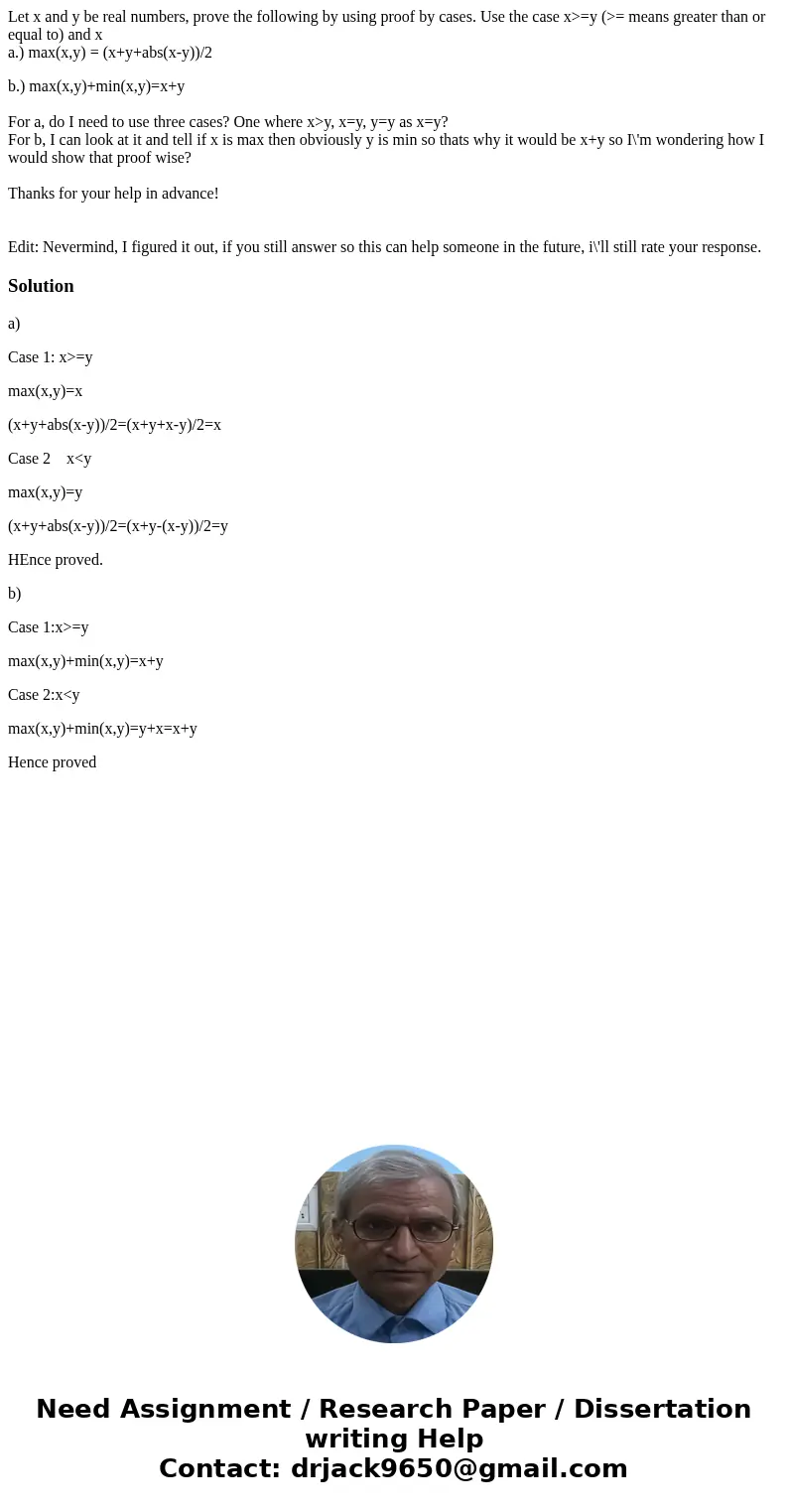Let x and y be real numbers prove the following by using pro
Let x and y be real numbers, prove the following by using proof by cases. Use the case x>=y (>= means greater than or equal to) and x
a.) max(x,y) = (x+y+abs(x-y))/2
b.) max(x,y)+min(x,y)=x+y
For a, do I need to use three cases? One where x>y, x=y, y=y as x=y?
For b, I can look at it and tell if x is max then obviously y is min so thats why it would be x+y so I\'m wondering how I would show that proof wise?
Thanks for your help in advance!
Edit: Nevermind, I figured it out, if you still answer so this can help someone in the future, i\'ll still rate your response.
Solution
a)
Case 1: x>=y
max(x,y)=x
(x+y+abs(x-y))/2=(x+y+x-y)/2=x
Case 2 x<y
max(x,y)=y
(x+y+abs(x-y))/2=(x+y-(x-y))/2=y
HEnce proved.
b)
Case 1:x>=y
max(x,y)+min(x,y)=x+y
Case 2:x<y
max(x,y)+min(x,y)=y+x=x+y
Hence proved

 Homework Sourse
Homework Sourse